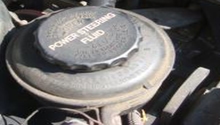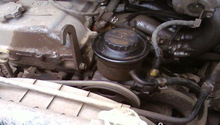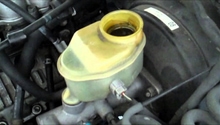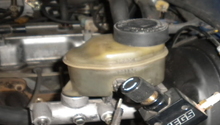Toyota 4Runner 1984-1995: How to Replace Power Steering Fluid
If your power steering fluid stinks like yesterday's garbage or it simply looks like garbage, it's time for a flush. This article will show you how to get that old nasty power steering fluid out and replace it with fresh, clean fluid.
This article applies to the Toyota 4Runner (1984-1995).
The power steering system in your Toyota 4Runner is a hydraulically-assisted one, meaning that it uses fluid to help move the steering gearbox. Much like engine oil or brake fluid, the power steering fluid breaks down over time due to contamination and heat, reducing its effectiveness in terms of lubrication and protection from any additives in the fluid. You should consider replacing it bi-annually to ensure a long service life of the steering gearbox. Fortunately, it's a pretty easy service to accomplish, so let's get it done.

Materials Needed
- Jack
- Jack stands
- Funnel
- Power steering fluid (around 1/4 liter)
- Rags
- Container or bucket to drain fluid into
- Length of rubber hose
- Turkey baster (optional)
- Vice grips
Step 1 – Drain old power steering fluid
Jack up the front of the truck and place jack stands under each side. Pop the hood and remove the power steering reservoir cap to relieve any pressure in the system. At this point, you can use a turkey baster with a length of hose (or a pump draining tool) attached to it to remove the fluid that is present in the reservoir, which is easier than draining it all from the bottom. Be careful not to damage the mesh filter located in the bottom of the reservoir while draining. Once you've drained all the fluid you can, disconnect the return hose from the power steering fluid reservoir using a rag to catch any drips. Drain any fluid present in the hose and pinch it off with a pair of vice grips. If you don't have vice grips, you can also plug the end of the hose as shown in Figure 3.
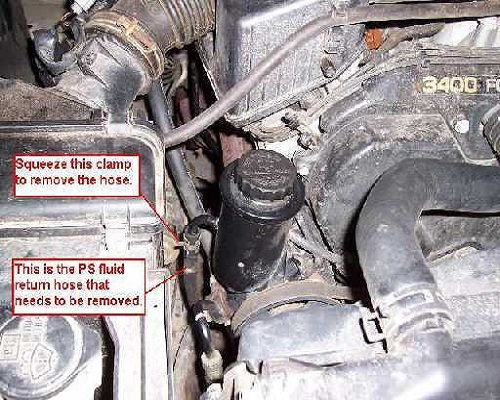
Figure 1. Removing the return hose. 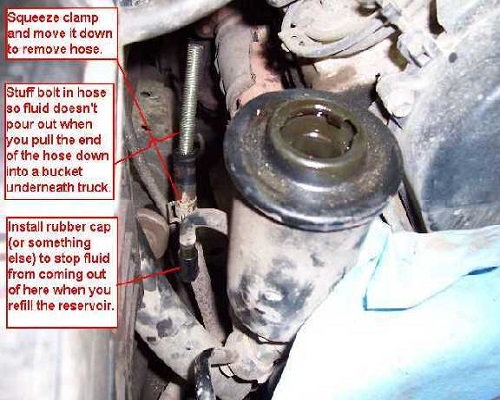
Figure 2. Plugging the return hose. 
Figure 3. A plug or vice grips can be used to cap off the hose.
Step 2 – Flush and top off system
Top off the reservoir with fresh fluid (around 1/4 liter). Pull the return hose down underneath the car and position it over a drain bucket or something that can catch excess fluid. Start the truck and allow around 1/4 liter to drain out or until you start seeing fresh fluid, then turn it off (it's helpful to have a buddy do this while you watch the fluid). Reinstall the return line and top off the reservoir again with fresh fluid. Turn the steering wheel all the way toward the passenger's side and hold it there for a few seconds to allow the fluid to fill the steering rack, then repeat for the driver's side. Top off the reservoir, then repeat the steps and add more fluid if needed.
Start the truck and slowly turn the wheel from lock-to-lock a few times, pausing for one or two seconds at each full lock. Have your buddy watch the reservoir as air bubbles should appear and the reservoir level with fluctuate. Once all the air is out, lower the truck to the ground and turn the wheel lock-to-lock a few more times to make sure there is no air in the system. Once complete, top off the fluid if needed and reinstall the reservoir cap.
Related Discussions
- Power Steering System Flush Write Up - YotaTech.com
- Using ATF for PS Fluid - YotaTech.com
- Factory Power Steering Fluid - YotaTech.com

